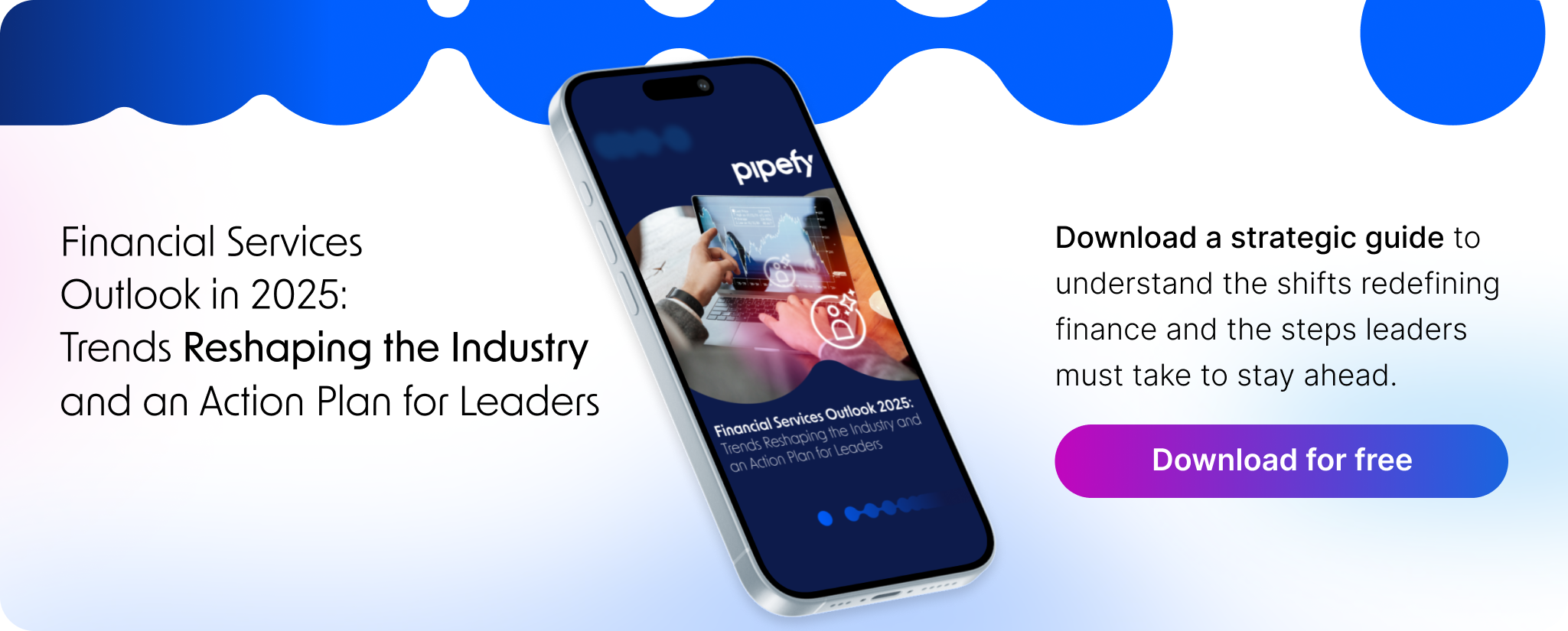
A business is only as efficient or effective as its processes. Business goals like maintaining high productivity levels, controlling costs and keeping customers satisfied all depend on the process quality and consistency. To build better processes, many businesses rely on a business process management system (BPMS).
What is a BPMS?
BPMS is software that helps businesses manage their processes and streamline their workflows. In order to be effective, a BPMS must help teams identify, organize, structure, and automate their processes. A BPMS also collects data on these processes in order to analyze and monitor them, as well as to further optimize each process on a continual basis.
How does a BPMS work?
A BPMS’s operation consists of four distinct stages: documentation, mapping, automation and enhancement.
- In the documentation phase, businesses document their processes and determine the additional actions needed to efficiently achieve goals.
- The mapping phase involves visually depicting or illustrating these processes in order to better understand how work is being done and to exert more control over the process.
- Automation eliminates manual tasks, enhances collaboration, and moves data between systems and apps.
- In the enhancement phase, companies continuously monitor processes and implement changes to improve them.
Examples of processes a BPMS can strengthen
BPMS can be used to optimize any type of business process. For example:
- Request management
- Sourcing and procure-to-pay
- Employee onboarding
- Customer service
- IT support
Benefits of implementing a BPMS
The benefits of implementing a BPMS include the following:
Increases profitability
Increasing an organization’s operational efficiency inevitably raises its profit. A BPMS makes processes more cost-effective by improving them so they accomplish more with the same resources. Reducing waste often involves eliminating process bottlenecks, allowing organizations to shorten their product lead time, product cycle time and time-to-market. These improvements are crucial for increasing sales and revenue.
Enhances visibility
Standardizing processes is a key requirement for reducing the risk of human error. A BPMS should include analytics that provide users with greater visibility into the performance of their processes, which is vital for identifying bottlenecks. The platform should also offer automation tools that allow users to focus on tasks requiring human expertise. Furthermore, a clear view of an entire process allows users to monitor that process in real-time, which facilitates process improvement.
Reduces costs
Cost reduction should always be an important goal in business. A BPMS can lower operational costs, directly leading to a lower budget and higher profits. It provides this benefit by controlling processes to ensure they don’t perform unnecessary or undesired actions. Additional sources of cost-cutting by BPMS include improvements to product quality, the elimination of bottlenecks and minimization of corporate risk.
Promotes compliance
Many organizations are subject to regulatory requirements, which may come from the government or the industry itself. A comprehensive BPMS ensures compliance with legal and industrial regulations by allowing users to document processes from a single platform. This practice promotes security and safety by facilitating the implementation of internal controls and policies. An organization that uses a BPMS is thus more organized and reliable.
Boosts efficiency and productivity
A BPMS is essential for increasing efficiency and productivity, It improves processes by automating repetitive tasks, thus increasing process performance. BPMSs also make business processes easier to implement by providing employees with valuable data they can use to track workflows more closely and allocate resources as needed.
Improves business agility
Organizations can also use a BPMS to quickly connect processes in response to changes in market conditions. Such a system can customize workflows to remain adaptable, which increases business agility. BPMSs also make organizations more agile by providing deeper insights into company operations.
Must-have features for a BPMS
Many BPMS solutions are currently available, making it crucial to ensure the one you select has all the features your organization requires. These features can vary greatly, but virtually all organizations need a BPMS with the following:
Workflow automation
Look for a BPMS that includes workflow automation capabilities. This feature helps teams eliminate manual work and repetitive tasks, which lead to inefficiencies and avoidable errors. Automation can resolve notifications, emails, data entry, approvals, status updates, and other tasks and activities.
No-code user interface
A BPMS needs a user-friendly interface that helps users easily create and edit a map of their company’s workflows. It should allow them to see crucial information at a glance and understand how their work is progressing in real time. A BPMS should allow users to easily model individual processes like the completion of web forms.
Data collection and management
A BPMS typically includes features for collecting and managing data, which is particularly important for organizations that generate large amounts of data. These features should offer the capabilities to identify relevant information and manage and analyze it in a way that allows users to create and maintain data elements. These data elements may then be used to define relationships between data entities.
Analytics and reports
BPMSs should include tools that analyze process performance and generate reports that provide data based on defined key performance indicators (KPIs) for processes, tasks and individual team members. Analytics are vital for helping organizations understand their processes, customer expectations and future market behavior, all of which are necessary for increasing profits over the long term.
Integrations
Today’s business processes are rarely confined to a single system. For example, acquiring customers requires multiple steps, such as onboarding them, providing them with a product or service and getting paid for it.
Each of these processes is often performed by a separate system requiring a BPMS that can coordinate a workflow across multiple systems while still controlling costs. For example, a BPMS often needs to integrate with a customer relationship management (CRM) platform, human resource information system (HRIS), human resource management (HRM) software and enterprise resource planning (ERP) platform.
How do you choose a good BPMS?
An organization should follow many steps to identify the best BPMS for its needs, including the following:
Understand your business necessities
Consider the nature of your business when selecting a BPMS, including your budget and the scope of the project. It’s also important to identify process pain points in order to define the problems that a BPMS needs to solve.
Evaluate how difficult it is to implement
Determine the capacity of the BPMS, including the number of users and processes it can accommodate. The impact of the implementation is also a critical consideration, especially the cost. The return on investment (ROI) will depend on factors like the cost of the license compared to the savings due to automation and the reduction in resource requirements.
Assess if the interface is easy to use
The interface of a BPMS should be easy to use so that non-technical users can quickly get up to speed. The more time it takes for users to learn the software, the longer it will take to receive a positive ROI. A BPMS that’s customized for your particular industry is also more likely to have a shallow learning curve for your users.
Low-code/no-code or programming software
Low-code/no-code software is one of the most effective tools for improving business processes. They allow business teams to model, modify and monitor processes in real-time, based on dynamic data like customer feedback and competitor activity. This type of software also relieves IT teams of the responsibility for handling change requests.
Does it integrate with the software you have?
To reap the full benefits of a BPMS, it should integrate with existing software and apps. This process will require you to identify all of your organization’s current systems and applications, their users, and the purpose of the software.
How do you implement a BPMS?
Once you’ve acquired the BPMS, the real work of implementing it can begin. This is the most important factor affecting the success of a process management initiative, so you’ll need to perform the following steps correctly.
Map your processes
The processes for implementing a BPMS include defining its scope, assessing the costs and establishing deadlines for milestones. You also need to develop the metrics for measuring the implementation’s success during this phase.
Identify bottlenecks
Identifying process bottlenecks requires visualization tools such as flow charts, fishbone diagrams and time trackers. You may conduct this process on a departmental or individual level, depending on the project scope and available resources. Each task should be mapped out from end to end, including the queuing time and time needed to complete the task once started.
Queuing time is of particular importance; this metric is a strong indicator of a bottleneck. A completion time that’s longer than expected can also indicate a bottleneck, with causes that include the skill level of the team members, hardware capacity and the process itself. Large organizations are likely to outsource the identification of bottlenecks to external consultants on process management and business analysis.
Prioritize the bottlenecks you want to fix
Bottleneck prioritization is an iterative process based on a number of criteria. For example, the importance of removing a bottleneck may be relatively low if it depends on a rare event, even if it results in a large bottleneck when it does occur. The window of opportunity for addressing the bottleneck is also a factor to consider, as is the cost of removing it.
In some cases, you can achieve a solution quickly by making one obvious change, while others require a pilot study. The potential impact of a possible solution depends on whether it’s direct or indirect, and whether it’s a short or long-term fix. Additional factors to consider when prioritizing bottlenecks include a) the solution’s expected sustainability, and b) its potential for unintended consequences.
Define goals and KPIs for the implementation
Important KPIs for evaluating an implementation’s success include cost reduction, the average time needed to complete a process, the average time saved on each process, productivity and process effectiveness.
Create a squad to implement the BPMS
The implementation team should include leaders from multiple business units. They will also need a deep understanding of the project and more training on the BPMS than typical users.
Increase your process efficiency with low-code BPMS software
Pipefy’s BPMS includes low-code tools that allow businesses to become more competitive. Non-technical team members can develop and deploy process changes based on business strategies or market conditions. BPM software also streamlines workflow and eliminates manual tasks by scaling process automation. In addition, it provides full, holistic process visibility for both internal and external users, allowing them to leverage key insights that improve process performance and customer experiences.
Try Pipefy for free or request a demo today to learn more about how we can help automate your business processes!










